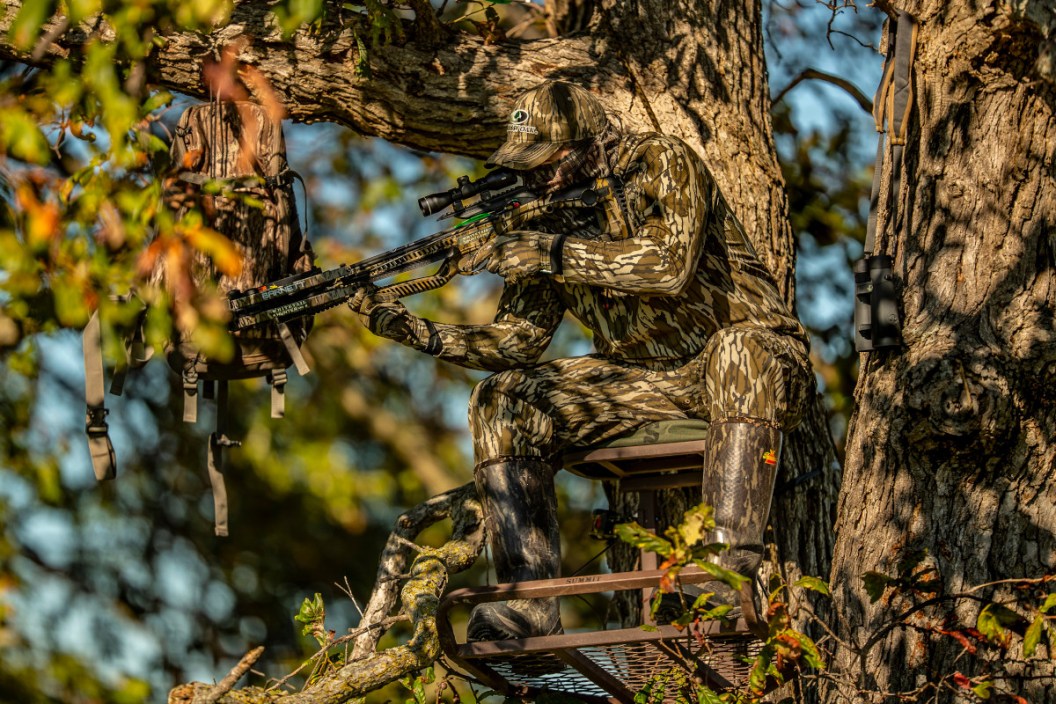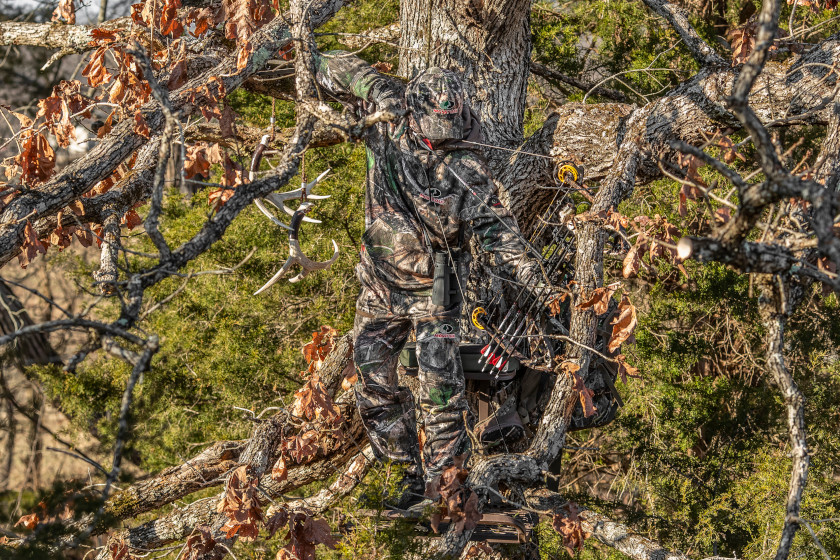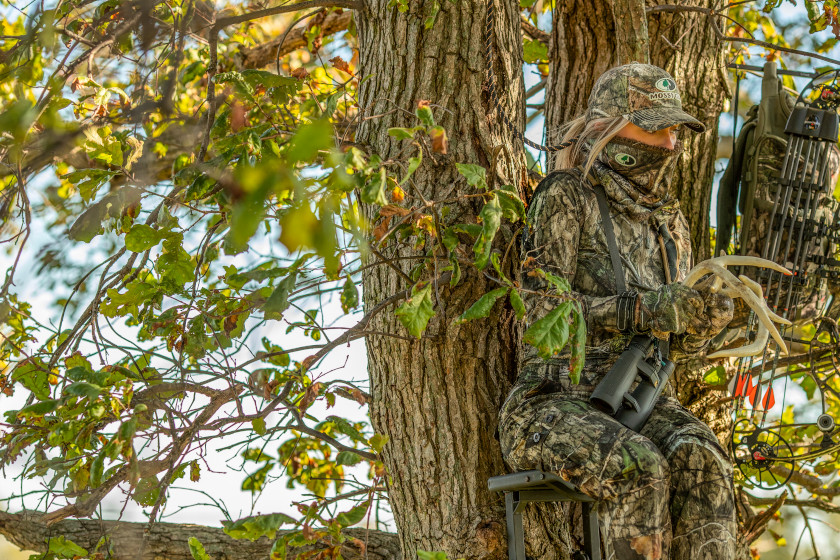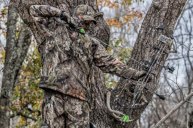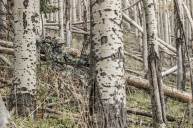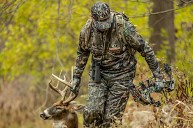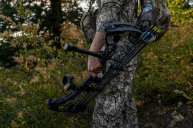Finding the perfect treestand setup to ambush that trophy buck can be a bit of a challenge. Sometimes, you find the area you're looking for but can't locate a good tree. Sometimes, you find an area with great cover but just don't get a good feeling about the location. Other times, you may not even know what you're looking for at all.
I've been there. In fact, I would say that at least once every season, I am scratching my head trying to locate a good treestand location but come up empty. Yet that factor is a huge piece of the puzzle when it comes to whitetail hunting, and it shouldn't be taken lightly. Many times in my earlier years, I have ruined an opportunity at a mature buck because my treestand setup wasn't perfect.
There is very little room for error in the whitetail woods, and every possible situation should be factored beforehand. This is why I have a relatively long process when it comes to finding that perfect treestand spot. While it might seem over the top or perhaps even unnecessary, trust me, it couldn't be more crucial.
My father used to say, "If there was someone in your bedroom, would you know?" Most people are going to answer that they would. Now consider that's what you're doing with deer: trying to remain undetected practically in their bedroom. Don't shortcut it. While this analogy might seem like a stretch, the premise of it holds true and is something to consider when hanging your stands. Here are the five most important signs I look for when trying to find that perfect treestand location.
Entry and Exit Routes
I put this one first for a reason. It is the most important factor to consider and always will be. If you somehow have found the greatest spot in the world for whitetail hunting but the access is terrible, don't hunt it. Pick a location that you can easily slip into and out of without creating too much noise, and without leaving too much ground scent.
One of the greatest whitetail hunters in the world, in my opinion, is Bill Winke, and he states regularly, "I would rather hunt a mediocre stand with great access than a great stand with mediocre access." No truer words have been spoken. Keeping impact low is a vital component of keeping deer around your stand.
The Prevailing Wind
The wind is a whitetail's secret weapon. It's the one thing they will always rely on to protect them from any sort of threat, including humans. Researchers at Mississippi State University found that a whitetail's sense of smell can be up to a thousand times more acute than ours. As impressive as that is, they need the wind to fully use that superpower. Don't give them that chance.
When choosing a spot to hang a treestand, determine the prevailing wind, analyze your data to confirm what direction the deer are traveling from, and hang your treestand based on how the wind correlates with their traveling. If you can't find a spot that plays the wind optimally, pick another location.
Funnels and Pinch Points
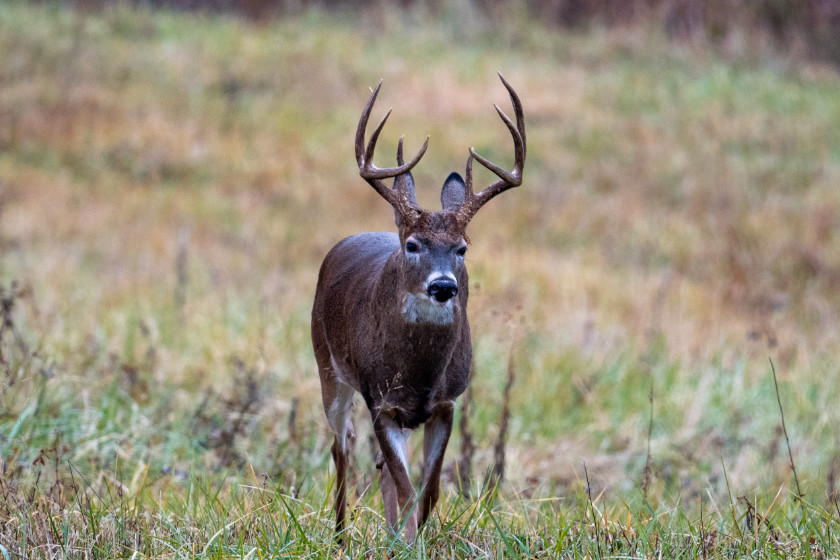
EEI_Tony via: Getty Images
Knowing where the deer are headed is great, but if they aren't walking within shooting distance of you, what's the point? This is where funnels and pinch points come into play, and why they are a vital thing I look for when hanging a treestand.
Not only am I looking for spots where deer will likely choose to travel through, I also am looking for areas where they have no other choice but to travel through. Sometimes these are natural, and other times you might have to create them—but the point is, you want to find a point where the deer are forced to travel.
Keep in mind that deer will often choose the path of least resistance. Locate areas just in between bedding and a food source that are locked by heavy brush or a steep drop-off. This will filter all the deer to a specific area—which is where you'll be waiting, ready to take the shot. Ledges, fallen timber, and thick shrub barriers such as multiflora roses and Japanese barberry are all great funnel indicators.
Tree Cover
One of my great friends had a pattern of locating incredible public-land whitetail spots, but then he would ruin it by hanging his treestand in some skinny poplar or dying ash tree. All of the signs would indicate deer were regularly visiting this area, yet he wondered why he never saw any. Well, odds are they were seeing him before he saw them.
Despite not seeing the full color spectrum, deer are incredible at picking out movement and odd silhouettes. Because of this, you need to locate a tree with as much going on in the background as possible. Oaks and maples with low-hanging branches provide great cover—but just keep in mind that during the late season, the leaves will be gone and you'll be much more exposed.
Getting as high as possible can be a good backup if your cover is lacking—although anything over 20 feet can feel a bit uneasy as well as give you an odd angle for most of your shots. When deciding on a tree, step back about 20 yards and look up 15-20 feet at the tree. If you don't see a good backdrop, find another tree.
Buck Signs
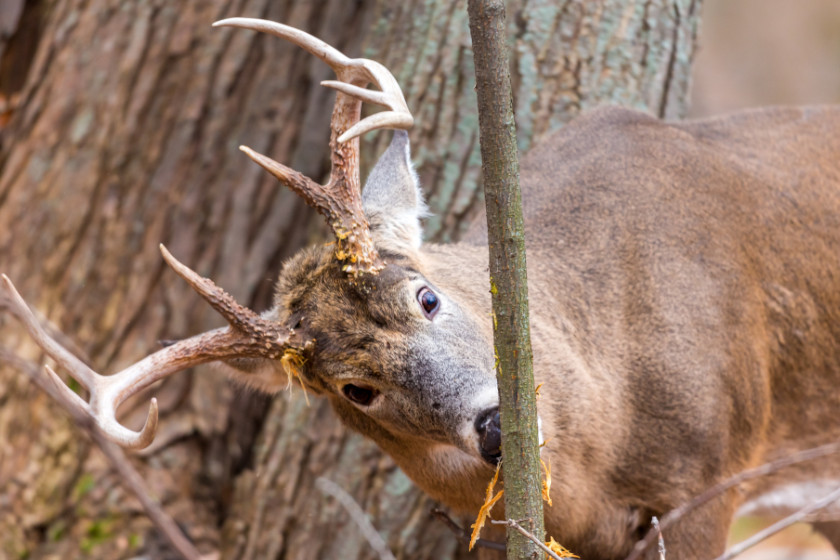
Dopeyden via: Getty Images
This one might seem obvious, but so often I help people on their property and see where they place their stands—and for the life of me, I can't find any clues that a buck travels through there. The old saying goes, "The No. 1 rule of deer hunting is to hunt where the deer are."
This can become more difficult during the offseason, when a buck's pattern is significantly different from what it will be during the season. However, there are still things to look for that will determine if he'll be there come deer season. Look for old rubs, oak patches, doe bedding areas, etc. Don't waste time trying to find a treestand location in an area without significant deer movement.
Finding the right spot to place your treestand is the backbone to your season's success. Without a great setup, all else fails. It's easy to plant a food plot and just assume wherever you place your stand will work fine, but that's missing the bigger picture.
Jim Hole Jr. is someone I look up to tremendously in whitetail hunting, and his success speaks for itself. What makes him so successful is that he looks at deer hunting from a much wider angle than most people. And he realizes that to harvest a mature buck, nearly everything has to be perfect and nothing can be a shortcut, especially when determining your treestand location. The next time you're scouting for a treestand location, consider these five factors. I can promise you it'll change the way you hunt for the better. Good luck!
